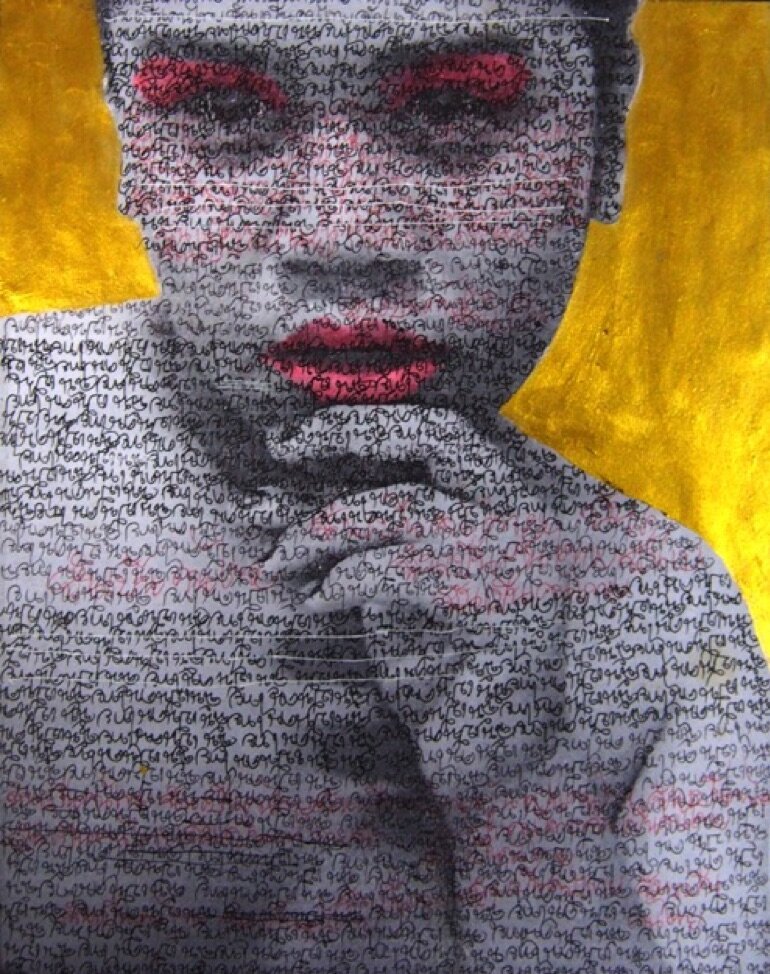Anuwat Apimukmongkon
Pattani artist striving for change
By Ho See Wah
Anuwat Apimukmongkon, ‘No Stranger?’, 2019, oil and gold leaf on canvas, 300 x 400cm. Image courtesy of the artist.
In our new segment, Fresh Faces, we profile an emerging artist from the region every month and speak to them on how they kick-started their career, how they continue to sustain their practice and what drives them as an artist.
To start off, we have Thai artist Anuwat Apimukmongkon. Born in 1995 in Trang, Thailand, Anuwat has a Bachelor of Fine Arts from Prince of Songkla University, Pattani Campus. He started exhibiting in 2017, and recent shows include ‘A Silent Voice’ at Tang Contemporary Art, ‘A+ Entree’ at A+ Work of Art and ‘SPECTROSYNTHESIS II – Exposure of Tolerance: LGBTQ in Southeast Asia’ at Bangkok Art and Culture Centre. The artist has taken on other roles, such as project manager for ‘RE/FORM/ING PATANI’, a pavilion under the Bangkok Biennial, and curator for various exhibitions including ‘Checkpoint’ at Patani Artspace and ‘SingNature’ at YELO House.
Anuwat Apimukmongkon, ‘Speak Thai’ series, 2016, acrylic, pen and pencil on photo print, dimensions variable. Image courtesy of A+ Works of Art.
Anuwat works with a range of media, from performance art to installations, though a prominent motif that occurs throughout his 2D works is his best friend, Bangli. Bangli, as a bisexual, exists outside of societal norms. As such, the use of his friend’s likeness is a symbolic gesture as Anuwat tackles hard topics in Thai society. His ‘Speak Thai’ series encapsulates this well. The manipulated black-and-white photo prints are striking to look at as bright pinks and golds colour the series, which renders an artificial nature to the photographs. Incidentally, gold represents the Thai royalty. Another running motif is lyrics from nationalistic anthems and songs scribbled across the canvas, literally occupying a sizeable chunk of space. The figure of Bangli brings these elements together, highlighting the tension between the constructed nature of nationhood and those who fall outside of it.
Click here to read our conversation with Anuwat, where he speaks about his affinity with art, the tensions of being an artist from the Deep South of Thailand and art as an agent of positive change.



